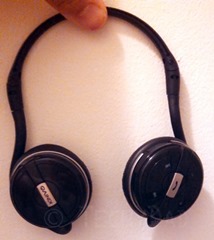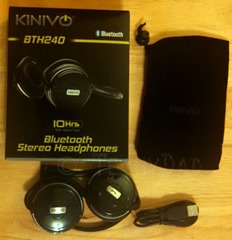![DTRave_Cartoon_Computer_and_Desktop_small1[1] DTRave_Cartoon_Computer_and_Desktop_small1[1]](https://www.techydad.com/wp-content/uploads/2014/07/DTRave_Cartoon_Computer_and_Desktop_small11.png) Over the years, I’ve written about the bandwidth caps that cable companies are placing on Internet usage, use of the term “cord cheater” to describe people who view online videos, and Network Neutrality. On the last item, the FCC has been collecting comments. To date, they have collected over 650,000 comments. Today, however, is the final day for submissions. I submitted mine already, but thought I would publish here as an open letter. Below is what I sent the FCC. If you haven’t submitted your comment yet and are quick, you might be able to send it in.
Over the years, I’ve written about the bandwidth caps that cable companies are placing on Internet usage, use of the term “cord cheater” to describe people who view online videos, and Network Neutrality. On the last item, the FCC has been collecting comments. To date, they have collected over 650,000 comments. Today, however, is the final day for submissions. I submitted mine already, but thought I would publish here as an open letter. Below is what I sent the FCC. If you haven’t submitted your comment yet and are quick, you might be able to send it in.
Update: Due to tons of people flooding their systems with last minute comments, the FCC has extended the deadline to Friday, July 18th.
NOTE: The computer image above is by DTRave and is available from OpenClipArt.org.
To whom it may concern,
I’m very worried about the issue of Network Neutrality. As a web developer and someone who is active on social media, I spend a lot of time online. I also keep up to date on what is happening in the online world. Unfortunately, I see one very big problem.
Most ISPs are monopolies or duopolies in their areas.
To give an example, I connect to the Internet via Time Warner Cable. I have no other wired broadband options available to me. FIOS doesn’t reach my area and DSL is a dying technology. (It’s older and slower and the telecom companies are chomping at the bit to get rid of it.)
What this means is that Time Warner Cable can essentially do whatever they want and I’m forced to continue service with them. They can raise rates, slow down my general connection, impose harsh caps/overage fees, or slow down specific sites until they are unusable.
If almost any other company did these things, the free market would lead customers to flee to their competitors. Unfortunately, the ISP market isn’t free. The cable companies know they have a lock (or near-lock) on their area. Cox isn’t going to invade Comcast’s territory and vice-versa. They’ve carved up the land into their own little fiefdoms where they can do as they please.
But why would a cable company want to slow down a connection to a website? Two words: Internet Video.
Cable companies make their money from cable TV – both live/DVRed content and on-demand content. However, services like Netflix, Amazon VOD, YouTube, etc, compete for consumers’ entertainment dollars and are drawing people away from cable TV. These are 100% legal options, but cable companies don’t like them. After all, everyone who watches a video on Netflix could have potentially paid the cable company to watch that video. The cable companies see money flowing to these “Internet upstarts” and it is ruining the cable companies’ status quo.
So something must be done.
The opening salvo came from Ed Whitacre, former head of AT&T, who in 2006 claimed that these Internet Video companies were getting a “free ride” off of AT&T’s connections because they weren’t paying for access to AT&T’s customers. Of course, the fact of the matter is that these Internet Video companies pay for their own bandwidth. To make an analogy, this would be like a pizza shop getting their business phone line from Verizon and AT&T complaining that the pizza shop was making money off of AT&T’s customers calling them without them paying AT&T. Nobody in their right mind would suggest that businesses should pay all phone companies so that those phone companies’ users would be able to call the businesses. Similarly, online companies shouldn’t have to pay ISPs access except for the company they pay for their bandwidth.
But who pays for the connection to the user, you might ask.
Here’s how the payments/connections go. The business (e.g. Netflix) pays their ISP for bandwidth. If that ISP is not a top tier ISP, they pay their upstream provider for bandwidth and so on until they reach the top tier. (In fact, Netflix pays a top tier ISP for bandwidth.) On the other side, users pay their ISPs for bandwidth. These ISPs again pay their upstream providers until the top tiers are reached. The top tier ISPs come to agreements with each other about how data is going to pass between them and what, if any, payments are required. As you can see, everyone gets paid. There are no free rides.
ISPs quickly backed away from any claims that they would block sites. Instead, they claimed that they simply wanted to open a “fast lane” to “help” websites get to users faster. All it took was a little payment. Otherwise, websites would be stuck on the “normal speed” lanes which the ISPs claimed would still be fast.
Unfortunately, we go back to the monopoly/duopoly situation. Since the “normal speed” lanes wouldn’t generate any profit, the ISPs wouldn’t have any incentive to keep sites using that service running at a decent speed. In fact, they would profit more if sites using the “normal speed lane” found themselves slowing down and needed to pay for “fast speed” access. Meanwhile, the ISPs’ own video services would get instant “fast lane” access without needing to pay anything. In short, the “fast lane” would be a money maker for ISPs. They would either slow down competitors or make additional money off of them.
As a side effect, these extra charges will be passed on to the Internet Video customers via rate hikes which – the ISPs hope – will push people away from Internet Video and to the ISPs’ offerings.
On the other side, ISPs are looking into instituting caps on their users. They claim this is to only charge users for the bandwidth that they use. The true purpose, however, is to punish users who use Internet Video. With caps in place, Internet Video users suddenly will find themselves with limits on how long they can watch. If they go over their cap, they risk getting charged overage fees. Of course, the ISPs’ own offerings will be exempt from the caps.
The net result of this is the effective price of an Internet Video service will go up which will, again as the ISPs hope, result in people leaving Internet Video for the ISPs’ offerings.
I’m not a huge fan of government regulations. There are many times when they just raise costs and add bureaucracy to a process that could be done cheaper/faster without the regulations. However, government regulations do have a place in this world. One instance is where the markets are so broken that companies can use their monopolies to crush competition and/or abuse customers.
The ISPs would love for the government to stand back and let them crush their competition with no interference. This way, they can make more money, grow even bigger, and wield more power over what people watch and when. I and hundreds of thousands of Americans are hoping that the FCC will stand up to these ISPs.
Companies shouldn’t be able to use monopolies in one area to protect their business interests in another area. The ISPs are trying to do this with “fast lanes” and by favoring their own traffic over those of their competitors. Those who support Network Neutrality want traffic to be “origin blind.” It shouldn’t matter if a packet of information comes from Netflix, a cable company’s on-demand service, or YouTube. It should be treated the same no matter what.
Note that this doesn’t mean that ISPs can’t prioritize traffic. For example, an e-mail message is less important to deliver right away than a video call. So video call packets could skip ahead of e-mail message packets. However, this is different than ISPs allowing their services to get priority over similar services offered by other companies. The former improves user experience, the latter improves the ISPs’ position at the expense of users and competitors.
When you are looking to craft Network Neutrality regulations, please keep in mind the millions of users your regulations will be affecting. They are currently helpless against the big ISPs profit-seeking and monopoly abusing schemes. As a government agency, of the people, by the people, and for the people, your first concern should be helping the citizens affected, not preserving ISP monopolies and turning a blind eye to their abuses.
Thank you for your time,
– TechyDad

 If I want to talk on the phone while driving, I’ve got to carry a Bluetooth headset along with me and remember to keep it charged. If I want to listen to music from my phone in the car, I need to plug the phone into the speaker with a wire and control the music with the phone itself. Neither situation is optimal. Enter the Kinivo BTC450 Bluetooth Hands-Free Car Kit.
If I want to talk on the phone while driving, I’ve got to carry a Bluetooth headset along with me and remember to keep it charged. If I want to listen to music from my phone in the car, I need to plug the phone into the speaker with a wire and control the music with the phone itself. Neither situation is optimal. Enter the Kinivo BTC450 Bluetooth Hands-Free Car Kit.

![DTRave_Cartoon_Computer_and_Desktop_small1[1] DTRave_Cartoon_Computer_and_Desktop_small1[1]](https://www.techydad.com/wp-content/uploads/2014/07/DTRave_Cartoon_Computer_and_Desktop_small11.png) Over the years, I’ve written about
Over the years, I’ve written about 
 When I was first sent the headphones to review, I was impressed with how they fold up. The sides move in to collapse the headphones down so small that they can fit in your pocket. My second thought, after I put them on, was that they felt uncomfortable. I didn’t like how the band felt on the back of my neck. However, I wondered if this was due to not being used to having headphones on like this. Sure enough, the more I used them, the more I got used to the feeling of having them on. Now, I don’t notice the headphones at all.
When I was first sent the headphones to review, I was impressed with how they fold up. The sides move in to collapse the headphones down so small that they can fit in your pocket. My second thought, after I put them on, was that they felt uncomfortable. I didn’t like how the band felt on the back of my neck. However, I wondered if this was due to not being used to having headphones on like this. Sure enough, the more I used them, the more I got used to the feeling of having them on. Now, I don’t notice the headphones at all. When I was getting the Kinivo BTH240 headphones to review, I was accidentally sent another product instead. As Kinivo sent the correct product for me to review, I decided to try out what they had sent as well – the Kinivo ZX100 mini-speaker. This is a very small speaker that plugs into your phone’s headphone port. The speaker pops up and provides some very impressive audio. I could definitely see using this to play a series of MP3s for a group or connecting it to a laptop to boost the audio output during a presentation. Given that
When I was getting the Kinivo BTH240 headphones to review, I was accidentally sent another product instead. As Kinivo sent the correct product for me to review, I decided to try out what they had sent as well – the Kinivo ZX100 mini-speaker. This is a very small speaker that plugs into your phone’s headphone port. The speaker pops up and provides some very impressive audio. I could definitely see using this to play a series of MP3s for a group or connecting it to a laptop to boost the audio output during a presentation. Given that 